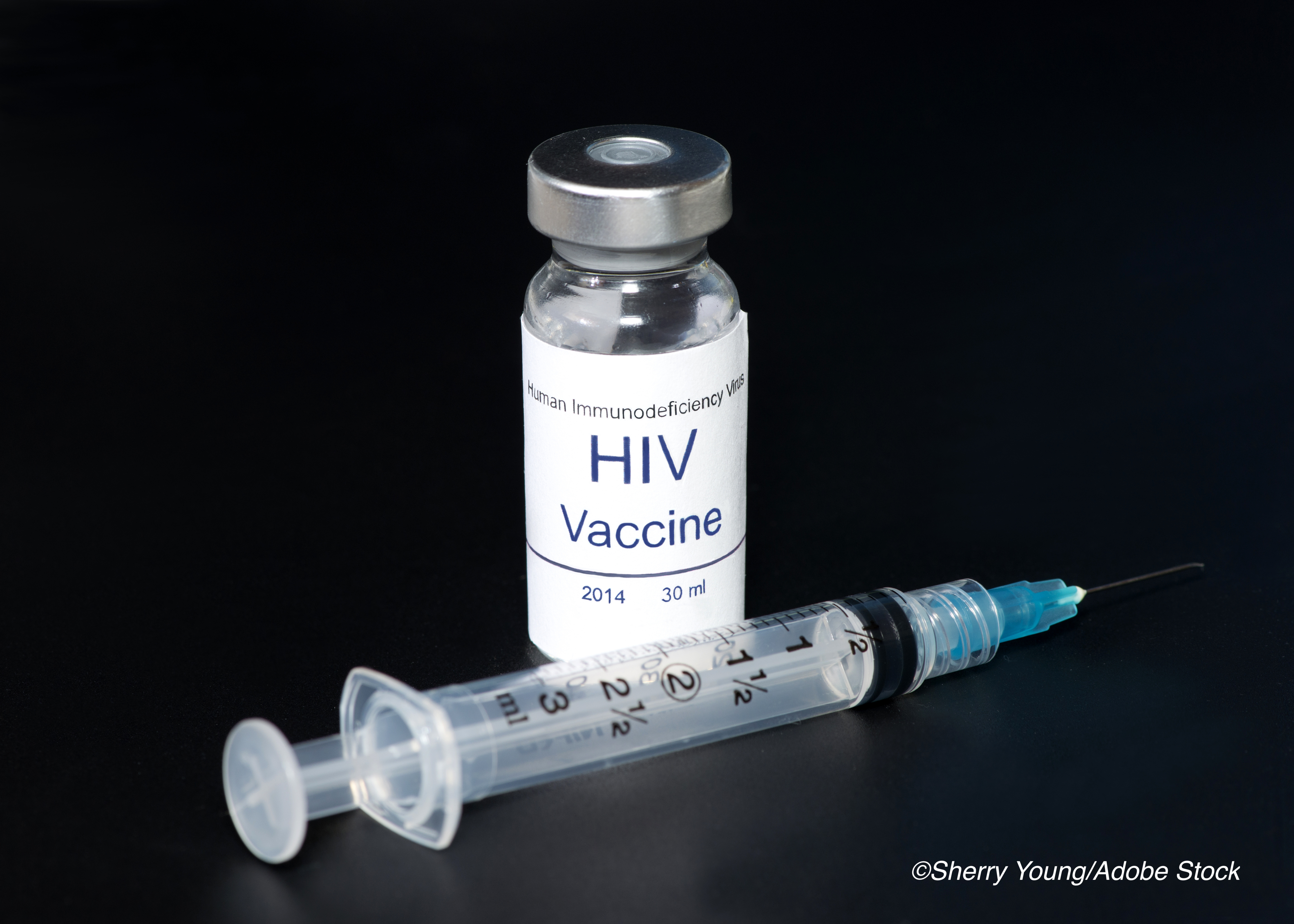An HIV vaccine plus boosters failed to prevent HIV-1 infection among participants in South Africa, according to an interim analysis of the HVTN 702/Uhambo trial, researchers reported.
The phase IIb/III trial evaluated the preventive vaccine efficacy of ALVAC-HIV (vCP2438) + Bivalent Subtype C gp120/MF59 in HIV-seronegative South African adults and aimed to replicate the vaccine’s success from an earlier trial in Thailand.
While the Thai RV144 trial was the “first and only HIV vaccine trial to show any efficacy in preventing HIV-1 acquisition,” according to one expert, HVTN 702 could not pull off the same: At the 24-month follow-up, HIV-1 infection was diagnosed in 138 people in the vaccine group and 133 people in the placebo group for a hazard ratio of 1.02 (95% CI 0.81-1.30, P=0.84), according to Glenda E. Gray, MBBCH, of the South African Medical Research Council in Parow Valley, a suburb of Cape Town, and co-authors.
They reported in the New England Journal of Medicine that the rate of HIV-1 infection broken down by sex was:
- Women: 4.3/100 person-years (95% CI 3.6-5.2) in the vaccine group and 4.2/100 person-years (95% CI 3.5-5) in the placebo group.
- Men: 1.3/100 person-years (95% CI 0.7-2) and 1.3/100 person-years (95% CI, 0.7-2.1), respectively.
Gray’s group explained that the trial’s data and safety monitoring board recommended halting vaccinations and unblinding the results. All study participants were scheduled for follow-up until one-year post-vaccination. However, they also noted that they could not not directly compare the regimens used in the RV144 and HVTN 702 trials to address differences in the use of vectors, adjuvants, and proteins, and that was a study limitation.
A version of the ALVAC-gp120 regimen demonstrated a 31% efficacy at three years in the RV144 trial in Thailand, but it was a “modest effect,” noted Mark B. Feinberg, MD, PhD, of the International AIDS Vaccine Initiative (IAVI) in New York City, in an editorial accompanying the study.
RV144 also had other shortcomings, Feinberg pointed out: Its efficacy was transient, the regimen “did not elicit antibody responses capable of neutralizing diverse circulating HIV-1 variants,” and its statistical methods for assessing vaccine efficacy were controversial.
However, the trial did lead to the identification of two non-neutralizing antibody responses, he explained, namely “an IgG response that recognized the V1-V2 regions of the HIV-1 glycoprotein envelope (Env) associated with a decreased risk of infection; the second was an HIV-1 Env-specific IgA response associated with an increased risk of infection.”
Gray’s group built on those V2-specific antibodies to develop a regimen with HIV-1 subtype C sub-Saharan African strains, including a transmitted-founder isolate, and phase I/IIa studies found the vaccine to be a safe, inducing “strong humoral and cellular immune responses,” they stated.
HVTN 702 had 5,404 adults (70% women; median age 24) without HIV-1 infection who were randomly assigned to receive either the vaccine (n=2,704) or placebo (n=2,700).
The vaccine dosing regimen was ALVAC-HIV at months 0 and 1, followed by four booster injections of ALVAC-HIV plus bivalent subtype C gp120–MF59 adjuvant at months 3, 6, 12, and 18. The primary efficacy outcome was the occurrence of HIV-1 infection from randomization to 24 months.
Gray and co-authors reported that none of the secondary outcomes, which included prespecified assessments of potential modifications in vaccine efficacy among women according to age, baseline HIV-1 risk score, BMI, and geographic region, were found to modify the vaccine efficacy.
“In an interim analysis performed in January 2020, the trial met the prespecified stopping criteria for nonefficacy with no safety concerns,” they stated.
Feinberg offered some possible reasons why HVTN 702/Uhambo (“Zulu for ’journey’,” he explained) was such a disappointment. He pointed out that there were “vaccine-related differences in both the canarypox vector and recombinant gp120 components…used, differences in the adjuvant that was used, or both; virus-related differences, including a greater circulating viral diversity in South Africa than in Thailand; and differences in the trial population, including a higher infection incidence and potential differences in risk behaviors and host susceptibility.”
“It is also possible that hypotheses regarding a decreased infection risk that emerged from the RV144 trial, especially the protective role of nonneutralizing antibodies against HIV-1, are incorrect,” he noted.
Gray’s group stressed that advances are needed on multiple fronts as vaccine-based HIV prevention research moves forward, such as an “immunologic biomarker to predict protection further,” and “isolating which factor or combination of factors is responsible for the different efficacy results in [RV144 and HVTN 702],” which they acknowledged will be a challenge.
“The high HIV-1 incidence that we observed in our trial illustrates the unrelenting aspect of the epidemic, especially among young women. More than ever, an effective vaccine to prevent HIV-1 acquisition in diverse populations is needed,” they concluded.
-
In the HVTN 702 trial, the ALVAC-gp120 regimen did not prevent HIV-1 infection among participants in South Africa despite previous evidence of immunogenicity.
-
Vaccine-related differences in both the canarypox vector and recombinant gp120 components that were used in the HVTN 702 trial did not replicate the efficacy signal seen in the RV144 trial.
Shalmali Pal, Contributing Writer, BreakingMED™
The HVTN 702 trial was supported by Novartis Vaccines and Diagnostics/GlaxoSmithKline (GSK) Biologicals, the National Institute of Allergy and Infectious Diseases/NIH, the Bill and Melinda Gates Foundation, and U.S. Public Health Service Grants/HIV Vaccine Trials Network. GSK Biologicals funded the provision of preexposure prophylaxis to trial participants. The trial also received support from the South African Medical Research Council.
Gray and Feinberg reported no relationships relevant to the contents of this paper to disclose.
Cat ID: 339
Topic ID: 338,339,284,339,730,125,190,27,31,192,561,925


